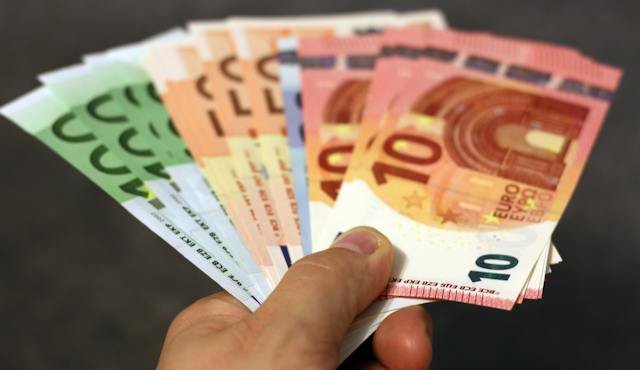Physical Address
304 North Cardinal St.
Dorchester Center, MA 02124
Physical Address
304 North Cardinal St.
Dorchester Center, MA 02124

Fiat currency is basically money that a government creates and supports. It includes the main currency that a government issues, like the dollar or euro. Also, any money that commercial banks create and use is considered fiat money. So, if a government introduces a new currency or if banks issue their own money, it falls into the category of fiat currency.
This type of money doesn’t have inherent value like gold or silver; instead, its value is based on the trust and confidence people have in the government or financial system.
In simple terms, when you use paper money or coins that the government or banks provide, you’re using fiat currency. It’s the kind of money we commonly use every day for buying things and making transactions, but it’s important to know that its worth is connected to the stability and trustworthiness of the government or financial institutions.

Fiat currency is a type of money that doesn’t have any physical value like gold or silver. Instead, it gets its value because a government supports and controls it. Examples of fiat money include U.S. dollars, euros, and British pounds.
There’s another kind of money called commodity money, or representative money. In this system, the value of money is linked to a physical item, like gold. For example, the gold standard ties the amount of gold available to the value of the dollar. If there is more gold, the dollar’s value can go up.
So, in simple terms, fiat money is money that the government says is valuable, while commodity money is backed by something real, like gold. The money we use every day, like dollars and euros, is usually fiat money.
Also Read: 10 Economic Capital Examples
The U.S. dollar is a special kind of money. It’s called “fiat money” and is also known as “legal tender,” meaning it’s accepted for paying all kinds of debts. Legal tender is money that the government says is okay to use.
In the past, the U.S. money was connected to gold (and sometimes silver). But things changed in 1933 when the government made a law called the Emergency Banking Act. After that, people couldn’t trade their money for government gold. The gold standard, which meant the government’s gold backed the money, ended in 1971 when the U.S. stopped giving gold to other countries for U.S. money.
Now, U.S. dollars don’t have a direct connection to gold or silver. Instead, they depend on the “full faith and credit” of the U.S. government. This means people trust the government to support the money. U.S. dollars are legal for paying all kinds of debts, both public and private. But unlike before, you can’t exchange them for gold or silver at the United States Treasury or a Federal Reserve Bank. So, they are “legal tender” now, not “lawful money” that you can swap for precious metals.
Fiat money includes currencies like the U.S. dollar, euro, British pound, Japanese yen, and Indian rupee. These are not backed by physical commodities but rely on the trust of the issuing government.
Typically, fiat money offers economic stability, but there are exceptions. Zimbabwe, in the early 2000s, faced severe economic issues. To address this, the central bank excessively printed money, leading to hyperinflation.
During this crisis, Zimbabwe’s currency lost 99.9% of its value. Prices soared, forcing consumers to carry bags of money for basic purchases. At the peak, the government had to introduce a 100-trillion Zimbabwean dollar note. Eventually, foreign currencies gained more acceptance than the depreciating Zimbabwean dollar. This example serves as a cautionary tale, showcasing the potential pitfalls of mismanaged fiat money systems.
Fiat money gains its value not from being tied to physical commodities like gold or silver, but rather from the trust and confidence people have in the government issuing it. One significant reason for its value is the government’s requirement that taxes must be paid using the specific fiat currency it issues. This principle, known as chartalism, ensures widespread acceptance of fiat money, as individuals are compelled to use it for tax payments to avoid penalties or imprisonment.
Unlike commodity-based money, such as gold coins or bills redeemable for precious metals, fiat money’s worth is solely derived from the belief that the government backing it is reliable. The government’s authority and the legal requirement to settle tax obligations with fiat currency create a consistent demand for it, fostering its acceptance in various transactions.
Alternative theories, like the credit theory, propose that all money involves a credit-debt relationship. However, the unique value proposition of fiat money lies in its association with government authority, reinforcing its significance in everyday economic activities. In essence, the value of fiat money is intricately linked to the trust people place in the government that issues it and the practical necessity of using it to fulfil tax obligations.
Also Read: 15 Best National Banks in America
Fiat currency and cryptocurrency are two types of money, but they work differently. Regular money, also known as fiat currency, is supported by a government or an issuing authority. On the other hand, cryptocurrencies like Bitcoin operate on a decentralized system called blockchain, which doesn’t have a central authority.
The main difference lies in who is in charge. Fiat money has a government or an issuer behind it, ensuring its value. In contrast, cryptocurrencies rely on a community of users to determine their worth. This community influence directly impacts the exchange rate of cryptocurrencies and can lead to either an increase or decrease in their value, a concept known as deflation or inflation.
So, while regular money is controlled and guaranteed by a central authority, cryptocurrencies are more like a community-driven digital asset. Understanding this difference helps us grasp the distinctive features of these two types of currency systems.